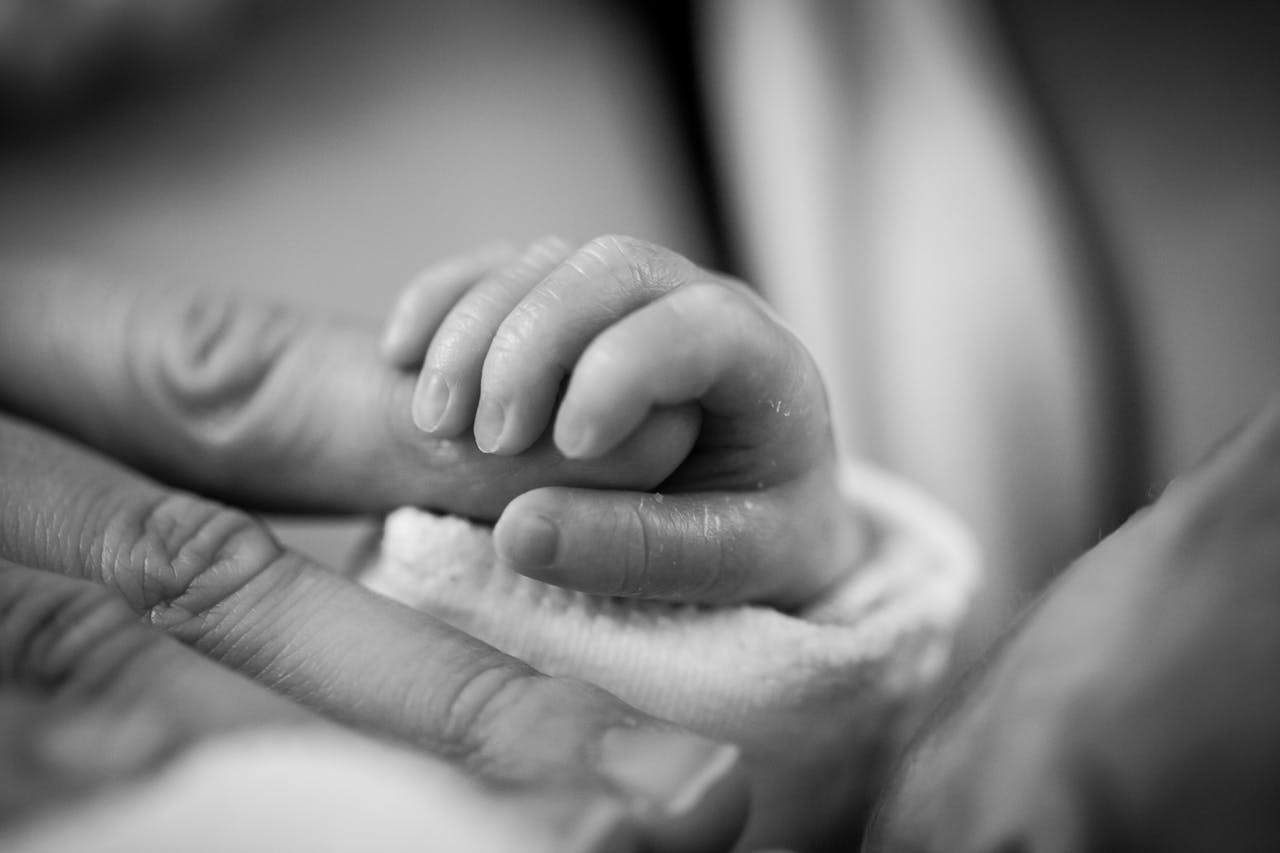Why Pediatric Skin Rashes Deserve Prompt, Professional Attention
If you’re a parent, you’ve probably encountered at least one unexpected rash on your child’s skin. Whether it appears suddenly, spreads quickly, or simply won’t go away—skin rashes in children can be worrying, frustrating, and confusing.
But here’s the good news: most childhood rashes are not only treatable—they’re manageable with proper pediatric guidance. At Gentle Pediatrics, we don’t just treat the rash. We identify the root cause, assess overall health, and ensure your child is cared for with comfort and compassion.
From heat rashes to eczema, hives to viral exanthems, this blog will walk you through how pediatricians identify, evaluate, and treat common skin rashes in children—so you can confidently manage your child’s skin health without panic or guesswork.
Why Pediatricians Should Be Your First Point of Contact for Skin Rashes
When it comes to children’s skin, one rash does not fit all. Misdiagnosing a rash can lead to prolonged discomfort, unnecessary medications, or missed signs of something more serious.
That’s why pediatricians are trained to distinguish between dozens of childhood rashes—often with just a visual assessment, medical history, and a few key questions.
Pediatricians can:
-
Identify the cause of the rash (allergy, infection, irritation, etc.)
-
Provide targeted treatments based on age and skin type
-
Rule out contagious or dangerous conditions
-
Monitor for complications like secondary infections
-
Offer preventive care tips for sensitive skin
As discussed in Helping Teens Thrive: A Pediatrician’s Guide to Managing Academic Stress Effectively, pediatric care goes far beyond physical symptoms—it includes understanding emotional and environmental triggers that can worsen skin flare-ups, especially in older children and teens.
1. Eczema (Atopic Dermatitis)
Eczema is one of the most common skin conditions in children—and it’s more than just dry skin. Characterized by red, itchy, inflamed patches (especially on the cheeks, elbows, and knees), eczema is often linked to genetics and immune sensitivity.
Pediatrician-Recommended Care:
-
Daily moisturization with fragrance-free emollients
-
Short, lukewarm baths with mild cleansers
-
Identifying and avoiding triggers (dust, certain fabrics, food allergens)
-
Prescription topical steroids or non-steroidal anti-inflammatories if needed
In many cases, we see eczema coexisting with asthma or allergies—an area we regularly monitor in pediatric evaluations.
2. Contact Dermatitis
This rash appears when the skin comes into direct contact with something irritating or allergenic—like certain soaps, detergents, metals, or plants like poison ivy.
Symptoms:
-
Redness, burning, or blisters in the area of contact
-
Clear borders of rash (matching shape of exposure)
-
Itching or pain depending on the irritant
Pediatric Treatment Includes:
-
Removing the irritant source
-
Applying cool compresses and topical corticosteroids
-
Teaching families how to spot reaction-prone ingredients in products
This is a key point covered in 10 Practical Child Health Tips Every Sugar Land Parent Should Know—where we stress the importance of using skin-safe laundry detergents and personal care items.

3. Heat Rash (Prickly Heat)
Especially common in warm climates or after physical activity, heat rash occurs when sweat ducts become blocked, trapping moisture under the skin.
What It Looks Like:
-
Small red or clear bumps, often on the neck, chest, or back
-
Mild itching or tingling
-
Worsens with heat and humidity
Pediatrician Advice:
-
Keep skin dry and cool
-
Dress your child in breathable fabrics (like cotton)
-
Use calamine lotion for itch relief
-
Avoid thick lotions or oils in warm weather
It’s a benign rash—but recurring cases should still be evaluated by your pediatrician to ensure it’s not something else.
4. Hives (Urticaria)
Hives are raised, itchy welts that appear suddenly and can move around the body. They’re usually a sign of an allergic reaction.
Common Triggers:
-
Food allergens (nuts, dairy, shellfish)
-
Medications (antibiotics, NSAIDs)
-
Viral infections
-
Insect stings
-
Stress
Pediatrician Management:
-
Oral antihistamines
-
Allergen testing when hives are recurrent
-
Emergency action plan for anaphylaxis if necessary
Pediatricians can determine whether hives are acute (temporary) or chronic—and whether further allergy testing is warranted.
5. Viral Exanthems (Viral Rashes)
These rashes result from viral infections and often come with symptoms like fever, runny nose, or sore throat. They tend to spread across the body as the illness progresses.
Common Types:
-
Roseola (pink spots after a high fever breaks)
-
Fifth Disease (red cheeks and lace-like rash on limbs)
-
Hand, Foot, and Mouth Disease (rash with mouth sores)
-
Measles (flat red rash starting at the hairline and spreading downward)
Pediatric Evaluation Includes:
-
Clinical diagnosis based on rash appearance and associated symptoms
-
Monitoring hydration and temperature
-
Isolation when necessary to prevent spread
-
Education on signs that indicate worsening illness
Parents should always consult a pediatrician before assuming a rash is “just viral”—especially in infants or unvaccinated children.
6. Impetigo
Impetigo is a highly contagious bacterial skin infection, often starting as red sores around the nose or mouth. These lesions quickly rupture and develop a honey-coloured crust.
Causes:
-
Bacteria (usually Staphylococcus aureus or Streptococcus pyogenes)
-
More common in warm, humid climates or after minor skin trauma
Treatment by Pediatricians:
-
Topical or oral antibiotics
-
Keeping affected areas clean and dry
-
Avoiding school or daycare until 24 hours after treatment starts
Left untreated, impetigo can lead to deeper infections—so early pediatric diagnosis is key.
7. Ringworm (Tinea)
Despite the name, ringworm is a fungal infection, not a parasite. It appears as a circular, scaly patch with a clear center and raised outer edge.
Where It Appears:
-
Scalp (tinea capitis)
-
Body (tinea corporis)
-
Feet (tinea pedis or athlete’s foot)
Pediatric Care Plan:
-
Antifungal creams or oral antifungals for scalp infections
-
Keeping infected areas dry
-
Discouraging sharing of hats, combs, or towels
Pediatricians differentiate ringworm from eczema or psoriasis using visual clues and, if needed, a skin scraping test.
8. Diaper Rash
Common in infants and toddlers, diaper rash is an irritation caused by prolonged exposure to wet diapers, chafing, or yeast overgrowth.
Pediatrician Tips:
-
Frequent diaper changes
-
Diaper-free time to let the area breathe
-
Applying thick barrier creams (zinc oxide-based)
-
Prescription antifungal cream if yeast infection is suspected
Although most cases resolve quickly, persistent rashes should be checked to rule out bacterial involvement or allergic dermatitis.

9. Molluscum Contagiosum
This viral skin infection causes small, firm, painless bumps with a dimple in the center. Spread through direct contact, it’s common in young children and often found on the trunk, arms, or legs.
Pediatrician Treatment Options:
-
Watchful waiting (resolves in 6–12 months)
-
Cryotherapy or curettage for persistent or widespread lesions
-
Advice on hygiene to prevent spread
Though harmless, molluscum can cause anxiety for families due to its appearance and longevity—your pediatrician can offer both reassurance and treatment.
10. Scabies
Caused by microscopic mites that burrow into the skin, scabies produces intense itching, especially at night, and a pimple-like rash that may form tracks.
Pediatric Protocol:
-
Prescription topical medications (permethrin or ivermectin)
-
Treating all family members simultaneously
-
Washing clothing and bedding in hot water
Because scabies spreads easily in households and schools, prompt pediatric treatment is essential to prevent reinfestation.
When to See Your Pediatrician Immediately
If you notice any of the following alongside a rash, contact your pediatrician right away:
-
High or persistent fever
-
Rash with bruising or bleeding
-
Sudden swelling of face or lips
-
Breathing difficulty
-
Rapidly spreading rash
-
Rash that doesn’t improve after 3–5 days of home treatment
At Gentle Pediatrics, we assess rashes in the context of your child’s full health picture—not just the skin. Our pediatric team ensures no symptom is missed and no parent is left confused.
Pediatrician-Approved Skin Care Tips for Prevention
Healthy skin starts with smart habits. Pediatricians recommend the following routines to reduce rash risks:
-
Use fragrance-free, hypoallergenic soaps and lotions
-
Dress kids in breathable, non-irritating fabrics
-
Keep fingernails short to prevent scratching and infection
-
Wash hands frequently, especially after play or daycare
-
Moisturize daily, especially after bathing
-
Keep vaccinations up to date to prevent rash-related illnesses
These habits, combined with regular pediatric checkups, can dramatically reduce recurring skin problems.
Trust Your Pediatrician When Skin Rashes Arise
Skin is a powerful communicator. It reflects allergies, infections, immune responses, and irritations that deserve a professional lens. Don’t let internet images or hearsay guide your treatment—consult a pediatrician who understands how your child’s skin fits into their overall health.
At Gentle Pediatrics, we partner with families to provide not just answers—but assurance, relief, and ongoing care. Whether your child has their first rash or recurring flare-ups, we’re here to help them heal, grow, and glow—comfortably.
